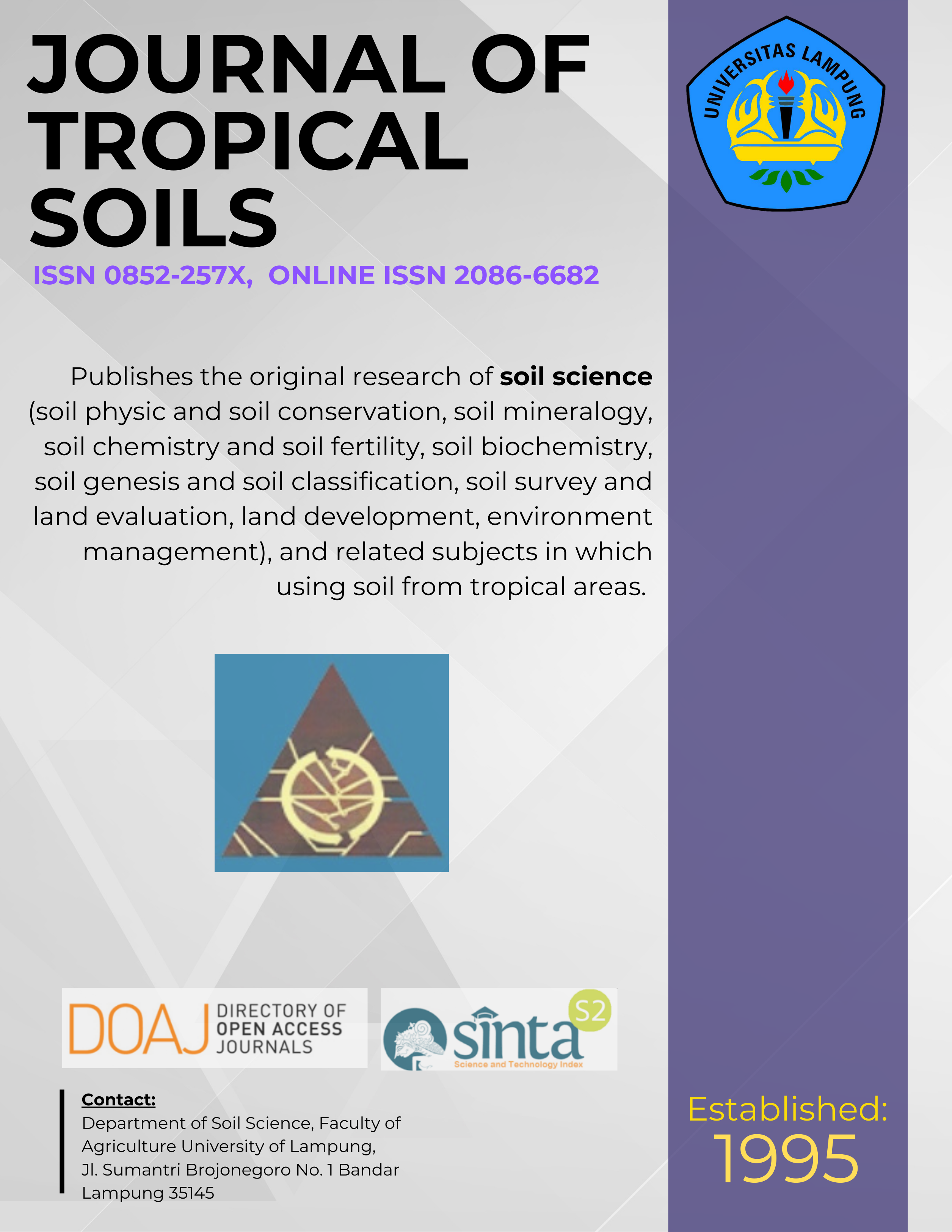Integrated Nutrient Management of an Acid Paddy Soil in Karang Tanjung Village, Padang Ratu, Central Lampung
Main Article Content
Abstract
Balanced fertilization is the key factor to improve the efficiency and effectiveness of fertilization.The dosage of inorganic fertilizers applied can be determined based on the nutrient status of P, K and rice productivity. The research aims to improve balance fertilization that combines inorganic fertilizers, which is set up based on soil nutrient status, and organic fertilizers. The research was conducted in Karang Tanjung Village, Padang Ratu District, Central Lampung, in the dry season of 2009 until 2012. An experimental plot of one hectare was set up in the farmer’s paddy fields. Generally, the plot for every treatment was owned by two or more farmers. The treatments consisted of the dose of fertilizer applications for lowland rice, namely (1) dose of fertilizers based on farmer practice, (2) dose of fertilizers proposed by Petrokimia, (3) 75% of fertilizer dose that was set up based on soil analysis plus straw compost, and (4) 75% of inorganic fertilizer combined with manure and biofertilizer. At the fourth growing season, each plot was applied with 100% inorganic fertilizer (NPK fertilizer). The results showed that the limiting factor of the soil used in the current study is the content of organic-C, N, K, and CEC. The compost of rice straw used as organic matter in the current study contains higher organic-C and total-N in comparison to manure. Organic matter application in the form of straw compost or manure can reduce 25% of NPK application, while the production of rice remains high. Fertilization on paddy soils based on soil nutrient status can improve fertilization efficiency. Rice production in the treatment of 100% NPK is similar to that in the fertilization treatments based on farmer practice and Petrokima rate.
Â
Keywords: Nutrient management, acid soil, fertilization efficiency
Downloads
Article Details
Issue
Section
License for Authors
Authors who publish with this journal agree to the following terms:
- Authors retain copyright and grant the journal right of first publication with the work simultaneously licensed under a Creative Commons Attribution License that allows others to share the work with an acknowledgement of the work's authorship and initial publication in this journal.
- Authors are able to enter into separate, additional contractual arrangements for the non-exclusive distribution of the journal's published version of the work (e.g., post it to an institutional repository or publish it in a book), with an acknowledgement of its initial publication in this journal.
- Authors are permitted and encouraged to post their work online (e.g., in institutional repositories or on their website) prior to and during the submission process, as it can lead to productive exchanges, as well as earlier and greater citation of published work (See The Effect of Open Access).
License for Regular Users
Other regular users who want to cite, distribute, remix, tweak, and build upon author’s works, even for commercial purposes, should acknowledge the work’s authorship and initial publication in this journal, licensed under a Creative Commons Attribution License.

